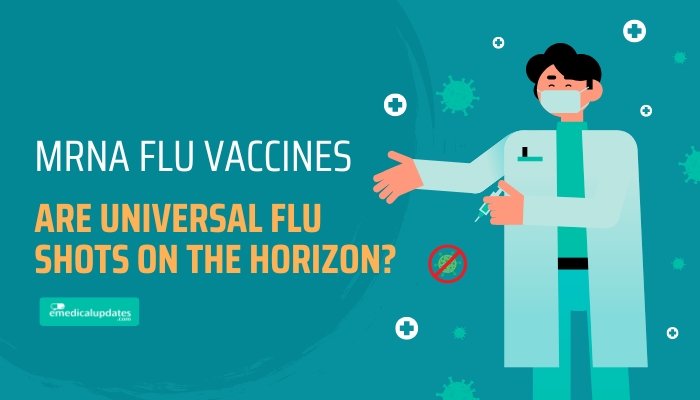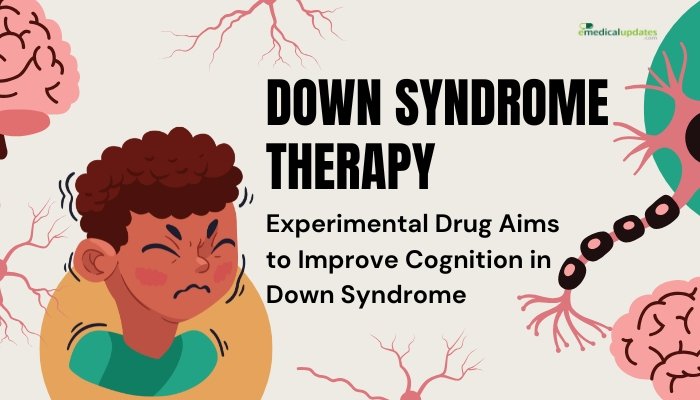Introduction
Seasonal influenza causes annual global outbreaks, leading to countless illnesses, hospitalizations, and deaths. Traditional flu vaccines, formulated each year to match predicted circulating strains, often struggle with suboptimal effectiveness due to constantly mutating viruses.
Now, scientists are applying messenger RNA (mRNA) technology—popularized by COVID-19 vaccines—to produce mRNA-based flu shots that could streamline the vaccine process and even pave the way for a “universal” flu vaccine offering broader, longer-lasting protection.
In this article, we explore the promise of mRNA flu vaccines, their potential to achieve universal coverage, and the challenges that remain before they can transform influenza prevention.
Why Traditional Flu Vaccines Fall Short
Annual Strain Selection
Each flu season, public health agencies predict which influenza virus subtypes (e.g., H1N1, H3N2, and two B lineages) are likely to circulate. Vaccine manufacturers start producing corresponding vaccines months in advance. But if the predictions miss or the virus mutates extensively, vaccine effectiveness drops.
Lag in Production
- Egg-Based Culture: Classic flu vaccines require growing viruses in chicken eggs, which can alter the virus and reduce vaccine match.
- Timelines: Large-scale egg-based production typically takes four to six months, limiting rapid responses to emerging strains.
Varied Efficacy
Even in well-matched seasons, real-world vaccine efficacy can vary (often 40–60%). Some populations (like older adults) have weaker immune responses. The cost in hospitalizations and complications remains significant.
The mRNA Approach to Flu
How mRNA Vaccines Work
mRNA vaccines provide the genetic blueprint for a viral protein. Once injected, human cells read this blueprint and produce that protein—often part of the virus’s surface. The immune system recognizes the protein as foreign, building specific defenses (antibodies, T-cells). Key mRNA features:
- Fast Design: Scientists can quickly update the mRNA sequence for new flu strains.
- Precision: No need to grow or weaken the live virus.
- Scalable Production: Potentially simpler manufacturing than egg-based methods.
Potential Advantages Over Traditional Flu Shots
- Speedier Updates: If new viral strains emerge late in the season, mRNA can be reformulated more rapidly.
- Broader Immunogenicity: By encoding specific antigens or multiple targets, some mRNA formulations might better cover a range of strains.
- No Egg Adaptations: Eliminates the risk that viruses mutate in eggs, preserving key antigenic structures.
Path to a Universal Flu Vaccine
What Is “Universal” Coverage?
A universal flu vaccine would offer robust protection against diverse influenza subtypes for multiple seasons, reducing the need for annual revaccination. The concept often involves targeting more conserved viral components (like hemagglutinin stem regions) that mutate less frequently across strains.
mRNA’s Role
mRNA technology can direct the immune system to produce multiple antigens simultaneously (e.g., covering various hemagglutinin subtypes or internal proteins). Early research aims to:
- Include Broad Epitopes: Possibly from multiple influenza viruses.
- Generate Both Antibodies and T-cell Responses: T-cells can recognize conserved internal proteins, bridging immunity across different flu lineages.
Early Trials and Challenges
Scientists have launched preclinical and early human trials for multi-strain mRNA flu vaccines. They look promising in generating broad responses, but obstacles remain:
- Defining Universal: No single approach may truly protect against every possible future strain.
- Durability: Vaccines must maintain immunity over multiple years if truly “universal.”
- Regulatory Hurdles: Large, long-term trials to confirm broad coverage and safety are essential.
Current Status of mRNA Flu Vaccines
Clinical Trials by Major Manufacturers
Some COVID-19 mRNA vaccine developers now pivot to flu:
- Moderna: Testing mRNA-based quadrivalent (four-strain) flu candidates. Early-phase results show strong immunogenicity, with Phase II/III trials ongoing.
- Pfizer/BioNTech: Investigating whether their COVID-19 platform can produce seasonal or multi-strain flu shots. They aim to combine COVID boosters and flu coverage in a single injection eventually.
- GSK and Others: Partnerships and pipeline projects for next-generation influenza mRNA products.
Preliminary Data
While some initial readouts suggest robust antibody titers, direct comparisons to standard flu vaccines are pending. Large-scale efficacy data in real-world settings will clarify if mRNA’s speed and design flexibility translate into better protection.
Potential Combinations
Developers foresee combo shots (e.g., COVID-19 + flu + RSV). If proven effective, these combination vaccines might reduce the number of separate annual jabs needed, improving compliance.
Benefits, Limitations, and Future Outlook
Rapid Adaptation
mRNA’s agility allows:
- Faster Updates: If a new strain emerges midseason, an updated shot could theoretically be produced in weeks or months, rather than a half-year.
- Pandemic Preparedness: For a novel pandemic flu, quick mRNA blueprint changes might expedite global vaccination.
Manufacturing Efficiency
While many companies have expanded mRNA manufacturing capacity post-COVID, ramping up to billions of flu doses remains a logistical challenge. Supply chain reliability (e.g., lipid nanoparticle components) is also vital.
Temperature Requirements
mRNA vaccines often demand ultra-cold storage. Improving formulations for standard refrigeration or stable shelf-lives is crucial for widespread distribution, especially in low-resource settings.
Public Acceptance
Uptake might hinge on:
- Proving Real-World Superiority: People want better or at least equal protection compared to conventional flu shots.
- Addressing Vaccine Fatigue: Communicating benefits, cost, and convenience clearly to encourage adoption.
Frequently Asked Questions
- Could mRNA flu vaccines replace existing flu shots soon?
- Possibly over the next few years, pending Phase III trial successes and regulatory approvals.
- How many strains would an mRNA flu shot cover?
- Early trials typically target the four major seasonal strains. Future versions may include more “universal” targets or multi-strain combos.
- Are there side effects different from standard flu shots?
- Side effects mirror those of other mRNA vaccines (e.g., injection-site pain, fatigue, headache) though data specific to mRNA flu vaccines are still emerging.
- Will I still need annual boosters?
- Unless a truly universal approach emerges that confers multi-year immunity, annual (or periodic) revaccination is likely.
- Is a universal flu vaccine guaranteed?
- While researchers aim for broad cross-strain coverage, the virus mutates rapidly. Complete universality is a lofty goal; partial expansions of coverage are more realistic near-term.
Conclusion
mRNA technology transformed the fight against COVID-19, and it’s now poised to reshape influenza prevention. The promise of an mRNA-based flu vaccine lies in faster, more precise strain selection and potential expansions to a “universal” approach that could drastically reduce the annual guessing game in flu shot composition. Though still under investigation, preliminary trials indicate strong immunogenicity comparable or superior to conventional vaccines.
A universal flu shot, if achieved, would reduce the need for yearly updates, slash global burdens of seasonal influenza, and fortify defenses against pandemic strains. With major pharmaceutical players investing heavily in mRNA flu pipelines, we may soon see a new era in influenza vaccination—faster to develop, broader in coverage, and possibly combined with other respiratory virus protection. Until then, ongoing research and real-world trials will clarify how soon these innovations can deliver on the goal of more effective, easily adaptable flu prevention for everyone.
References
-
- CDC. (2022). “Seasonal influenza vaccine effectiveness studies.”
-
- WHO. (2021). “Global influenza strategy 2019-2030.”
-
- Pardi N, Hogan MJ, Porter FW, Weissman D. (2018). “mRNA vaccines—a new era in vaccinology.” Nat Rev Drug Discov.
-
- Moderna Press Releases. (2023). “Updates on mRNA influenza vaccine phase II/III trials.”
-
- Pfizer/BioNTech Corporate Announcements. (2023). “mRNA-based combination vaccines for COVID-19 and influenza.”







